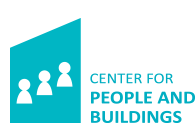Most important aspects of the work environment - A comparison between two countries
May 2011 | Peggie M. Rothe, Marion Beijer, Theo van der Voordt
Purpose
The purpose of this (EFMC)paper is to explore similarities and dissimilarities in work environment priorities of Finnish and Dutch office users. It also explores if people from different age groups have different priorities. As such this study contributes to a better understanding of user needs and preferences with regard to their physical work environment and how to steer on employee satisfaction and labour productivity in workplace change processes. As globalization increases, the workplaces today host employees with different nationalities and cultures. So it is important to understand and take into consideration cultural differences and their impact on user needs in decision making on accommodating people and the design, implementation and management of new work environments. Knowledge of age related differences may help to link accommodation choices to the needs of old and new generations.
Results
Internet questionnaires were used to collect data on which three work environment attributes employees find to be the most important out of a set of 19 attributes. The results show both similarities and differences in prioritized aspects in Finland and the Netherlands. Functionality and comfort of the workspace, opportunities to concentrate, and accessibility of the building are rated highest in both countries. However, with 55% of the Finnish people marking opportunities to concentrate as one of three most important aspects versus 37% of the Dutch respondents, the Finnish show to be more distinct about this issue. Privacy is a little higher on the list of Finnish users, whereas adjacency and locality of spaces and openness and transparency of the work environment show to be more important for the Dutch office users.
Originality and value
The originality of the paper is in its search for cultural differences. Its main value is the exploration of elements that are important to consider when developing and standardizing workplace concepts that aim to support employee satisfaction and productivity.
